What is Incidence matrix in Discrete mathematicsThe incidence matrix can be described as a matrix that shows the graph. That means the incidence matrix is used to draw a graph. We will use the symbol [Ac] to represent the incidence matrix. Just like all other matrices, this matrix also contains rows and columns. In the graph, the number of nodes is indicated with the help of rows of incidence matrix [Ac], and the number of branches is indicated with the help of columns of that matrix. If the given incidence matrix contains the n number of rows, then it will show that the graph of this matrix has n number of nodes. Similarly, if the given incidence matrix contains the m number of columns, then it will show that the graph of this matrix has the m number of branches. 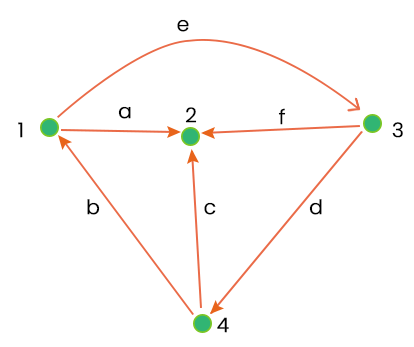
The above graph is a directed graph that has 6 branches and 4 nodes. So we can say that this graph contains the 6 columns and 4 rows for the incidence matrix. The incidence matrix will always take the entries as -1, 0, +1. The incidence matrix is always analogous to the KCL, which stands for the Kirchhoff Current Law. Thus, the following things can be derived from the KCL:
Steps to Construct Incidence matrixThe incidence matrix can be drawn with the help of some steps, which are described as follows:
Examples of Incidence matrixIn this example, we have a directed graph, and we have to draw the incidence matrix of this graph. 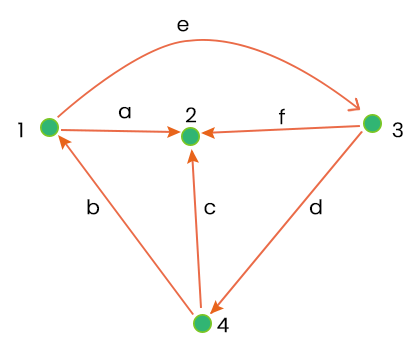
The incidence matrix of the above graph is described as follows: [AC] =
Reduced Incidence matrixIf we delete any arbitrary row from the given incidence matrix, in this case, the newly created matrix will be known as the reduced incidence matrix. The newly created matrix or reduced matrix is indicated by the symbol [A]. The order of this reduced incidence matrix will be (n-1)*b, where b is used to indicate the number of branched and n is used to indicate the number of nodes. The reduced incidence matrix for the above incidence matrix is described as follows: [A] =
In this matrix, we have deleted node no 4 of the incidence matrix [AC]. Example of Reduced incidence matrix To show the example of a reduced incidence matrix, we will consider an incidence graph. Now we have to write the reduced incidence matrix for this incidence graph. 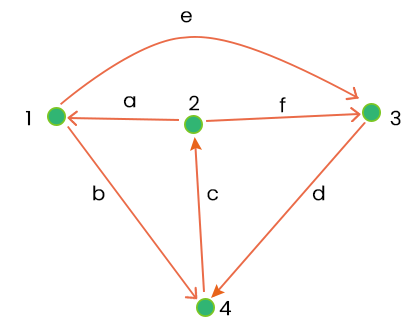
Solution: We have to first draw an incidence matrix of the given graph to draw the reduced incidence matrix. The incidence matrix of the above graph is described as follows: [AC] =
Now we will draw the reduced incidence matrix of this matrix, which is described as follows: [A] =
In this matrix, we have deleted node no 2 of the incidence matrix [AC]. Example of Incidence matrixExample: In this example, we have to represent the graph shown in the following image with an incidence matrix. 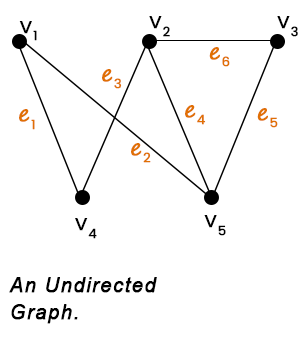
Solution: The above graph is an undirected graph, and the pseudo graph of this graph is described as follows: 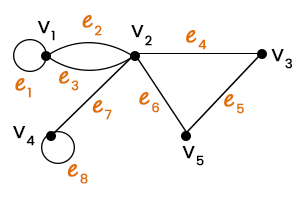
The incidence matrix of this graph is described as follows:
With the help of incidence matrices, we are also able to represent the multiple edges and loops. In the incidence matrix, the columns are used to show the multiple edges with identical entries. This is because these edges are incident with the same vertices pair. We can indicate the loops with the help of columns with exactly one entry equal to 1, which corresponds to the vertex that is incident with this loop. Important Points: There are some important points that we should remember while learning about the incidence matrix, which is described as follows:
Next TopicImplication in Discrete mathematics
|
 For Videos Join Our Youtube Channel: Join Now
For Videos Join Our Youtube Channel: Join Now
Feedback
- Send your Feedback to [email protected]
Help Others, Please Share









